What was carried, how and where from?
Apart from the staple trade in coal, many companies, especially based in Sleaford, sought trade from the area.
As can be seen from this Tariff of Rates, one agent offered transport for a huge variety of goods in many weights:-
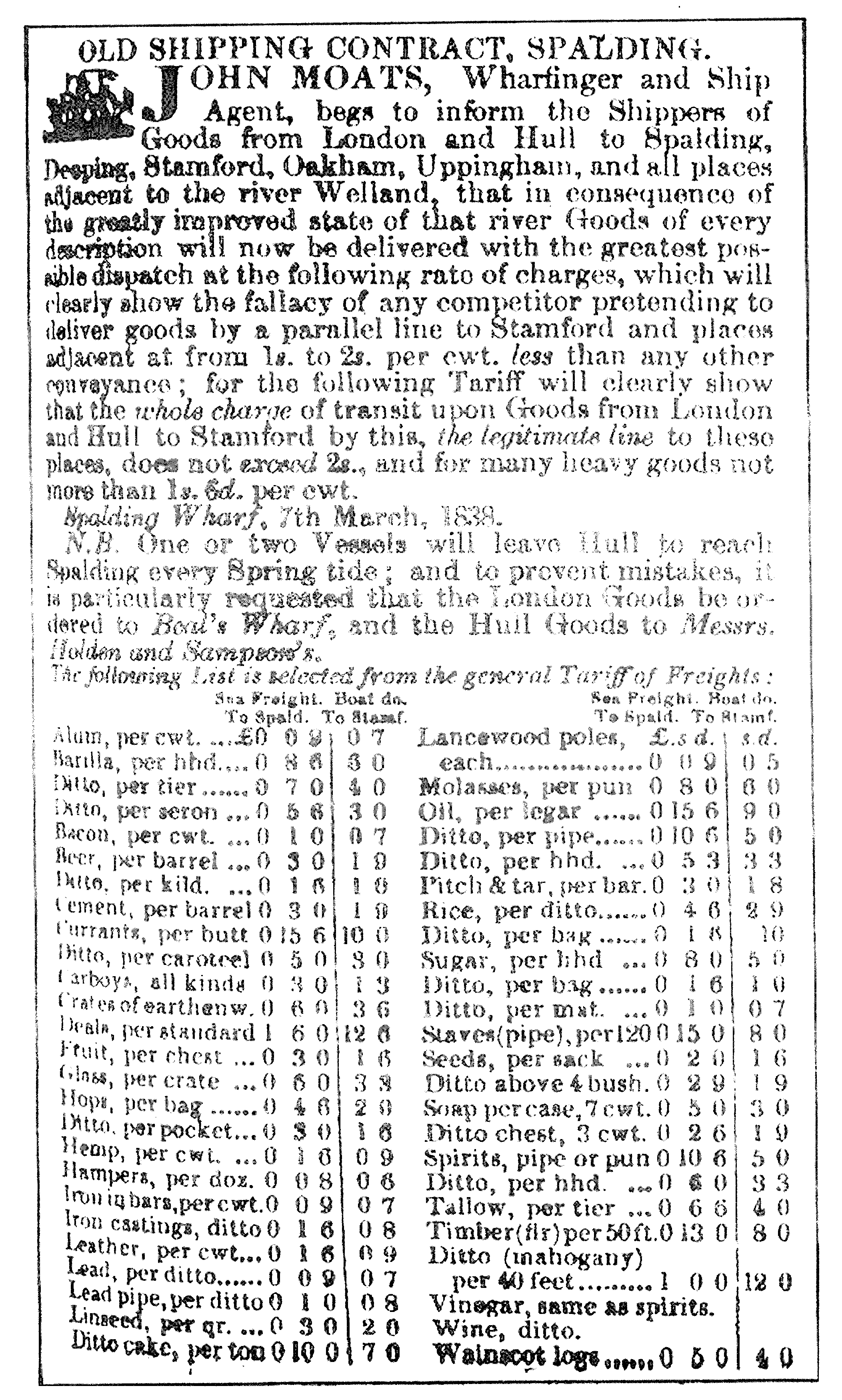
Obviously there was a brisk trade for many other goods including flour, as well as the basic coal trade. These would have needed barges kept clean for the purpose so individual trips up and down would carry quite a variety of goods in particular barges. For instance, the coal barges could carry osiers on the way up and back. Osiers were the staple cane-like thin twigs grown for roofing and basket weaving.
As these goods were traveling by sea, river and canal, different types of vessels were employed. Sail boats plied the east coast carrying goods as far as Spalding where they were unloaded before transferring to lighters for the onward journey.
Pulled by sailing boats as far as possible, then by horses and man power the rest of the way.
Small businesses made the most of the opportunities, as this advert shows:-
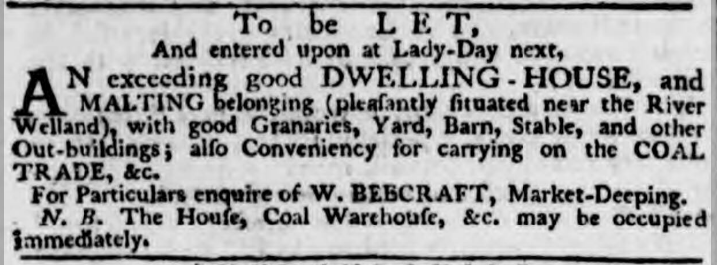
One of the most well known coal merchants actually began trading in Tallington, from behind what became the Reading Room in Mill Lane.
Ellis and Everards moved up to the Tallington railway goods yard and then branched out to many places from there. This is a bill from their Rushden depot:-
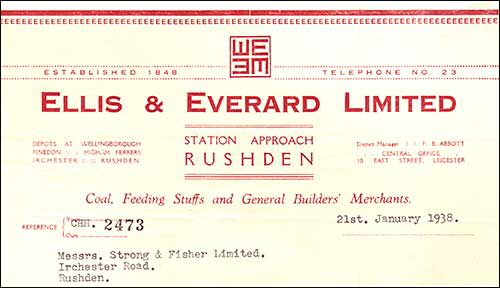
The local home coal delivery service!
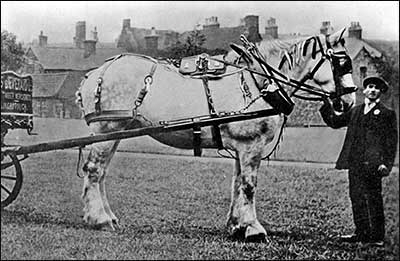
The places goods were carried to and from was extended once they got to Hull or London for Europe, then Liverpool for Ireland and America!
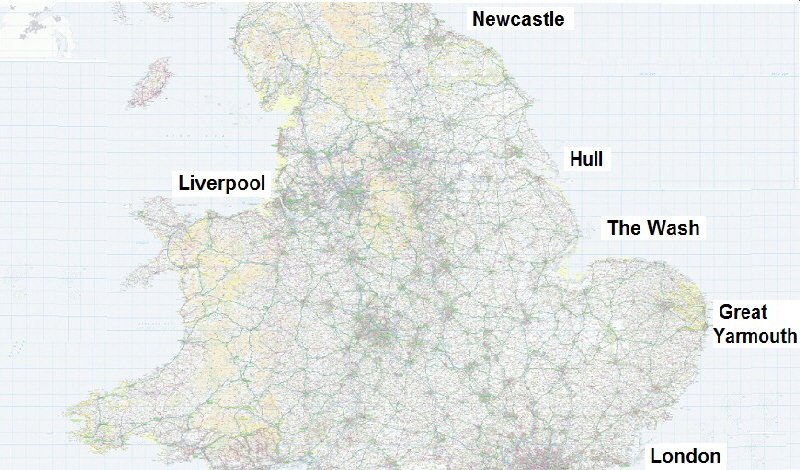
The Stamford Canal << The earliest proper canal in England? <<
